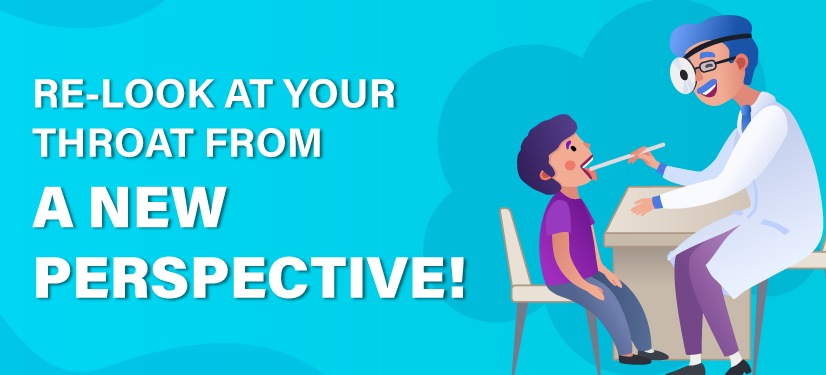There’s more to tasting food than we thought

Did you know that a teeny weeny organ might be peacefully hiding in your throat without your knowledge?
Yes, it’s true! Scientists in the Netherlands accidentally discovered a new organ that had always been present in our throat. They confirmed that the organ is located in the space where the nasal cavity meets the throat.
An accidental meet
A team of scientists at the Netherlands Cancer Institute was studying prostate cancer, a type of cancer that occurs in the prostate glands in males. This type of cancer is often diagnosed and treated with Prostate membrane antigen (PSMA). But this team used a combination of two medical devices – CT scans and positron emission tomography (PET) s along with Prostate membrane antigen (PSMA) to get a better diagnosis. For the scanning, doctors injected a radioactive ‘tracer’ into the patient. This tracer binds well to the protein PSMA, which helps in alleviating prostate cancer cells. While going through the process, these scientists stumbled upon these new sets of salivary glands.
You may wonder what happened to the already present salivary glands then? The truth is we have more than just one set of salivary glands to help us taste our food better.
Amazed? Read on.
The types of salivary glands
Has the mere thought of your favourite food ever made your mouth water? Your senses instantly take you closer to the imagination of the taste, flavour, and smell of that food while your mouth just helplessly drools. Well, that’s because we have three major paired salivary glands to blame!
In humans, these three salivary glands are classified as parotid, submandibular, and sublingual. They are located in three different parts – a set near the ears, another below the jaw, and a third under the tongue. Along with these, there are probably a thousand microscopic salivary glands scattered throughout the mucosal tissue of the throat and mouth. Together, these glands produce saliva through a system of circumscribed channels called ducts. “Now, we think there is a fourth,” said Dr Matthijs Valstar, a researcher and a surgeon at the Netherlands Cancer Institute.

Location of the three types of salivary glands – the parotid gland, submandibular gland, and sublingual gland in humans.
According to the study published in the journal Radiotherapy and Oncology, the researchers said that they confirmed the presence of the fourth set of salivary glands after studying it in around 100 patients. Interestingly, all these patients had the fourth set of salivary glands. The scientists have named them ‘tubarial salivary glands’.
What’s in a name?
A lot!
The team decided on the name of the fourth salivary glands based on its position and purpose. These glands are located over a piece of cartilage called the torus tubarius, which is found in a part of the throat called the pharynx. Scientists deduced that their purpose probably lies in lubricating and moistening the upper throat behind the nose and mouth. They found that the tubarial salivary glands are about 3.9 centimetres in length on average.

The tubarial salivary glands are found in humans between the nasal cavity and throat
Why were these glands discovered now?
It is not clear why these glands were previously overlooked. Dr Wouter Vogel, a radiation oncologist at the Netherlands Cancer Institute, said that one of the reasons could be its location as it is “not very accessible, and you need very sensitive imaging to detect it.”
What’s special about this discovery?
Vogel and his team believe that their discovery is potentially good news for some cancer patients, especially neck and head cancer. He said that their findings could explain why “patients who undergo radiation therapy of the head or neck often end up with chronic dry mouth and swallowing problems. Patients may have trouble eating, swallowing, or speaking, which can be a real burden. Our next step is to find out how we can best spare these new glands and in which patients. If we can do this, patients may experience fewer side effects, which will benefit their overall quality of life after treatment,” he concluded.
Did you like reading this article? Read more such mind-boggling articles in BYJU’S Science Feed